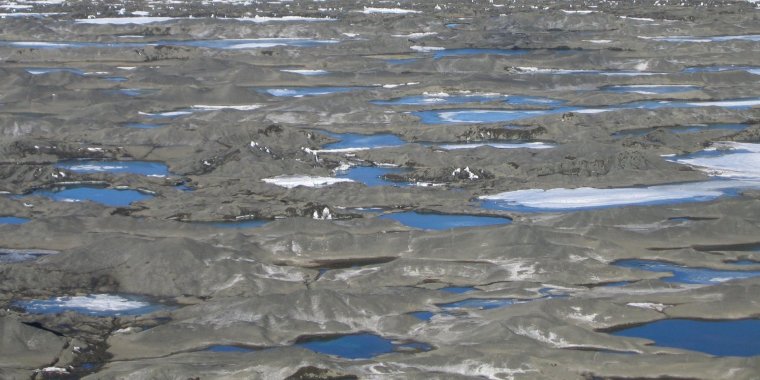| News / Science News |
Surface lakes cause Antarctic ice shelves to ‘flex’
A team of British and American researchers, co-led by the University of Cambridge, has measured how much the McMurdo ice shelf in Antarctica flexes in response to the filling and draining of meltwater lakes on its surface. This type of flexing had been hypothesised before and simulated by computer models, but this is the first time the phenomenon has been measured in the field.

Meltwater lakes on the McMurdo ice shelf. Photo: AntarcticGlaciers.org (CC BY-NC-SA 3.0)
The results demonstrate a link between surface melting and the weakening of Antarctic ice shelves and support the idea that recent ice shelf breakup around the Antarctic Peninsula may have been triggered, at least in part, by large amounts of surface meltwater produced in response to atmospheric warming.
As the climate continues to warm, more and more ice shelves may become susceptible to flex, fracture and break up over the coming century.
Most of the Antarctic continent is covered by the Antarctic Ice Sheet, which is up to four kilometres thick and contains enough ice to raise global sea levels by about 58 metres. Over most of the continent and for most of the year, air temperatures are well below zero and the ice surface remains frozen.
But around 75% of the ice sheet is fringed by floating ice shelves, which are up to a kilometre thick, mostly below sea level, but with tens of metres of their total height protruding above the water. In the summer months, when air temperatures rise above freezing, the surfaces of these ice shelves are susceptible to melting.
What is not fully known is the extent to which surface water might destabilise an ice shelf, especially in warmer summers when more meltwater is produced. If the slope of the ice shelf is sufficiently steep, the water may flow off the ice shelf to the ocean in large surface rivers, mitigating against any potential instability.
The danger comes if water pools up in surface depressions on the ice shelf to form large lakes. The extra weight of the water will push down on the floating ice, causing it to sink a bit further into the sea. Around the edge of the lake, the ice will flex upwards to compensate.
“If the lake then drains, the ice shelf will now flex back, rising up where the lake used to be, sinking down around the edge,” said lead author Dr Alison Banwell, also from Cambridge’s Scott Polar Research Institute. “It is this filling and draining of lakes that causes the ice shelf to flex, and if the stresses are large enough, fractures might also develop.”
Banwell and co-author Professor Doug MacAyeal from the University of Chicago had previously suggested that the filling and draining of hundreds of lakes might have led to the catastrophic breakup of the Larsen B Ice Shelf 2002 when 3,250 square kilometres of ice was lost in just a few days.
YOU MAY ALSO LIKE



